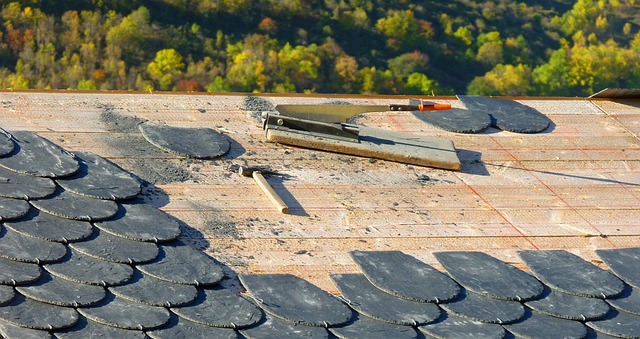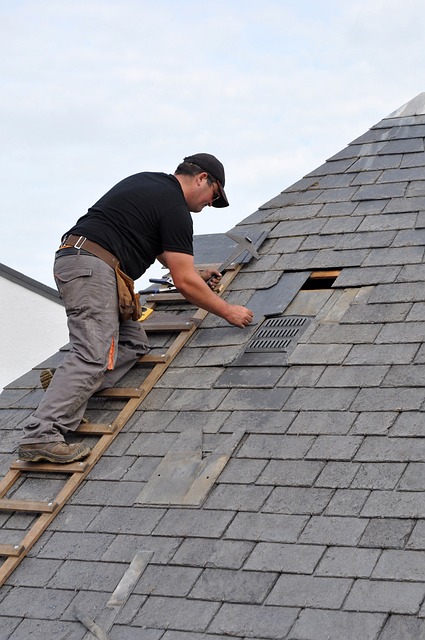Roofers frequently come across old, hazardous materials like asbestos and lead-based paint during their work. They must employ proper removal techniques for safety and environmental protection, involving identification, specialized methods, precautions, protective gear, adherence to regulations, and secure job sites. Roofers play a crucial role in responsibly managing these substances, ensuring disposal according to local laws and standards to protect workers and the environment.
“Roofers often face the critical task of removing old, damaged, or hazardous materials during renovation projects. This process demands meticulous care to ensure worker safety and environmental protection. This article guides roofers through essential steps in safely disposing of and managing hazardous materials commonly encountered on roofing sites. By understanding proper disposal methods and environmental considerations, roofers can contribute to a safer, more sustainable construction landscape.”
- Understanding Hazardous Materials Removal for Roofers
- Safe Disposal and Environmental Considerations for Damaged Materials
Understanding Hazardous Materials Removal for Roofers

Roofers often encounter old, damaged, or hazardous materials during their work, making it crucial to understand proper removal techniques for safety and environmental reasons. As professionals in the construction industry, roofers play a vital role in ensuring that materials like asbestos, lead-based paint, and outdated insulation are handled and disposed of correctly. These substances can pose significant health risks if not managed appropriately.
Proper hazardous materials removal involves identifying the types of materials present on a roofing project and employing specialized methods for safe extraction and disposal. Rooftop renovations or replacements may uncover hidden dangers, requiring roofers to take precautions, use protective gear, and follow local regulations. This meticulous approach guarantees that the job site remains secure and minimizes potential environmental impact.
Safe Disposal and Environmental Considerations for Damaged Materials

When a roofer deals with old, damaged, or hazardous materials, safe disposal becomes paramount to protect both workers and the environment. It’s crucial to understand local regulations regarding the removal of materials like asbestos, lead-based paint, or contaminated debris. Professional roofing services often include responsible disposal as part of their comprehensive package, ensuring these materials are handled according to environmental standards.
Proper disposal methods vary for different types of damaged materials. For instance, asbestos, a common component in older roofs, must be removed by certified specialists who use specialized equipment and protocols to prevent the release of harmful fibers. Similarly, lead-based paint requires specific procedures to avoid exposure during removal, as it can still pose a significant health risk if not handled correctly. By adhering to these guidelines, roofers contribute to a cleaner, safer environment for both present and future generations.
When it comes to roofers dealing with old, damaged, or hazardous materials, safe disposal and environmental considerations are paramount. By understanding the proper removal processes and adhering to environmental regulations, roofers can ensure a sustainable and responsible approach to their work. This not only protects the health of their team but also contributes to a greener planet. Embracing these practices is crucial for the roofing industry’s continued growth while minimizing its ecological footprint.
